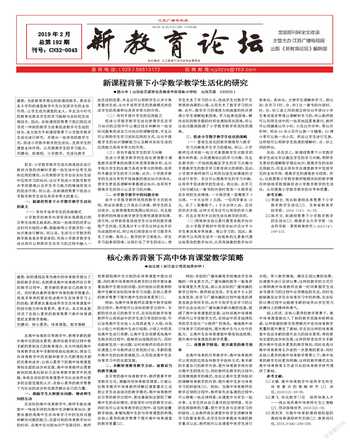Cultural Factors in Visual and Linguistic Art
刘丽妍
Abstract: Language, as one of the most important carriers of culture, can’t be learned as an independent knowledge and isolated from culture itself. Instead, be means of cultural analysis of the context and discourse, language learners can not only obtain the meaning of the language, but also get the good command in cross cultural communication. Besides, learner’s sensitivity in the cultural differences develops in the context of the target cultural education. Consequently, along with their comprehension of such cultural differences,the learner’s cross-cultural awareness will be greatly improved.
Key Words: Cross-cultural Communication, Art College, English
![]()
In 2001, the Chinese Ministry of Education issued New Curriculum Standards for Senior English, in which culture awareness was clearly pointed out as one of the five components of comprehensive language competence. As a matter of fact, the cultivation of cross-culture awareness is a great advance with times basing on the trend of globalization. The paper tries to elaborate the necessity of introducing cross-cultural awareness to art college English class based on the relationship between language and culture.
When the communication carries on between people “whose cultural perceptions and symbol systems are distinct enough to alter the communication event”, it becomes cross cultural communication. Cultural perceptions are based on beliefs, values, and attitude systems.
Dodd defines intercultural communication (also called cross cultural communication or trans-cultural communication) as “communication between peoples of different cultures”. In his definition, cultural phenomenon is described as static elements rather than the dynamic phenomenon of cross cultural communication. Cross cultural communication is an on-going, ever-changing process. Some recent studies are starting to focus on the process of communication and the application of its principles to cross cultural context. This definition contains three important points.
First, it emphasizes that cultural difference is an important dimension of cross culturalcommunication. Second, it indicates that culture exerts great influences on communication, which means communication does not exist in a vacuum and culture provides the context for communication to take place. And third, culture influences how messages are sent, how they are received, and how they are interpreted. In a word, in cross cultural communication where a message sender is a member of one culture and a message receiver is of another, communication involves building commonality in a world of cultural diversity.
Everyone in today’s world engages in cross- cultural communication for various reasons. International business development and information technology development have made cross cultural interaction more pervasive than ever before. Communication satellites, sophisticated television transmission equipment, and digital switching networks now allow people throughout the world to share information and ideas at the same time. Modern transportation systems also contribute to the creation of the global village.
Cross-cultural communication promotes culture exchanges. During the process of culture exchanges, people can share the civilization commonly created by human kind and speed up the development of human society. In China, especially after the Opening-door Policy was adapted in 1978, China has realized that from the historical experience, isolation cuts off information about foreign countries, widens the gap of understanding between China and the outside world and leads to a political and economical backwardness. Frequent cultural exchange activities have brought about a progress of reform and an economic booming in China since China’s door has been re-opened by the Chinese themselves. The influences of foreign cultures, Western culture in particular, are immense, international trade has been dramatically increased. New material products and technology have been imported. Foreign investors, businessmen and professionals have been invited to China. Huge numbers of Chinese have gone overseas to learn advanced science and technology and business management. All these indicate that like the previous openness to the outside world in china’s history, learning from foreign cultures has bought about great changes in China.
Culture and language intrinsically depend on each other. On the one hand, language, as the crystal of a culture, plays an important role in transmitting its own culture.
The function of language to culture shows that language is the surface form of the culture. What people say directly reflects their attitude, belief, values and etc., ---that is culture. The reason embedded in this phenomenon that there are various languages in the world is that cultures are diverse. So, in a deep sense, the nature of the linguistic differences lies in the differences between cultures.
English teaching in China, especially in junior and senior high school, with the stress from college entrance examination, follows a stereotyped model. Grammar and sentences patterned are overemphasized, with less concern of culture. Overemphasis on grammar and the ignorance of cultural differences frequently result in misunderstanding even conflict in cross cultural communication. Thus, culture learning, both home and foreign culture learning appears to be really significant.
The close relations of culture and language determine the inseparability of culture teaching and English language teaching.As the inheritor of art, cart college students should have the ability of cross-cultural thinking. In the process of creating works of art, it can better present the artistic achievements of international norm. A high level foreign language teaching should be composed of developing students’ skill of listening, speaking, reading and translating through the teaching of pronunciations, vocabulary and grammar on one side; and cultivating their communicative ability from the perspective of intercultural communication.
Art College English teaching doesn’t only require a better understanding of vocabularies and sentence structures, but also the perfect combination of visual art and linguistic art in the cross-cultural context.
References:
[1]Lawrence E. Harrison, Samuel P. Huntington: Culture Matters, 2000, xv
[2]邓炎昌、刘润清. Language and Culture, (Beijing: Foreign Teaching and Study Press, 1989)
[3]王穎. 英语教学中的文化教学,山东外语教学,2002(5),pp19-22
[4]Samovar L.A., Porter Richard E., Atefani Lisa A. Communication between Cultures. Beijing: Foreign Language teaching and Research Press, 2000.

